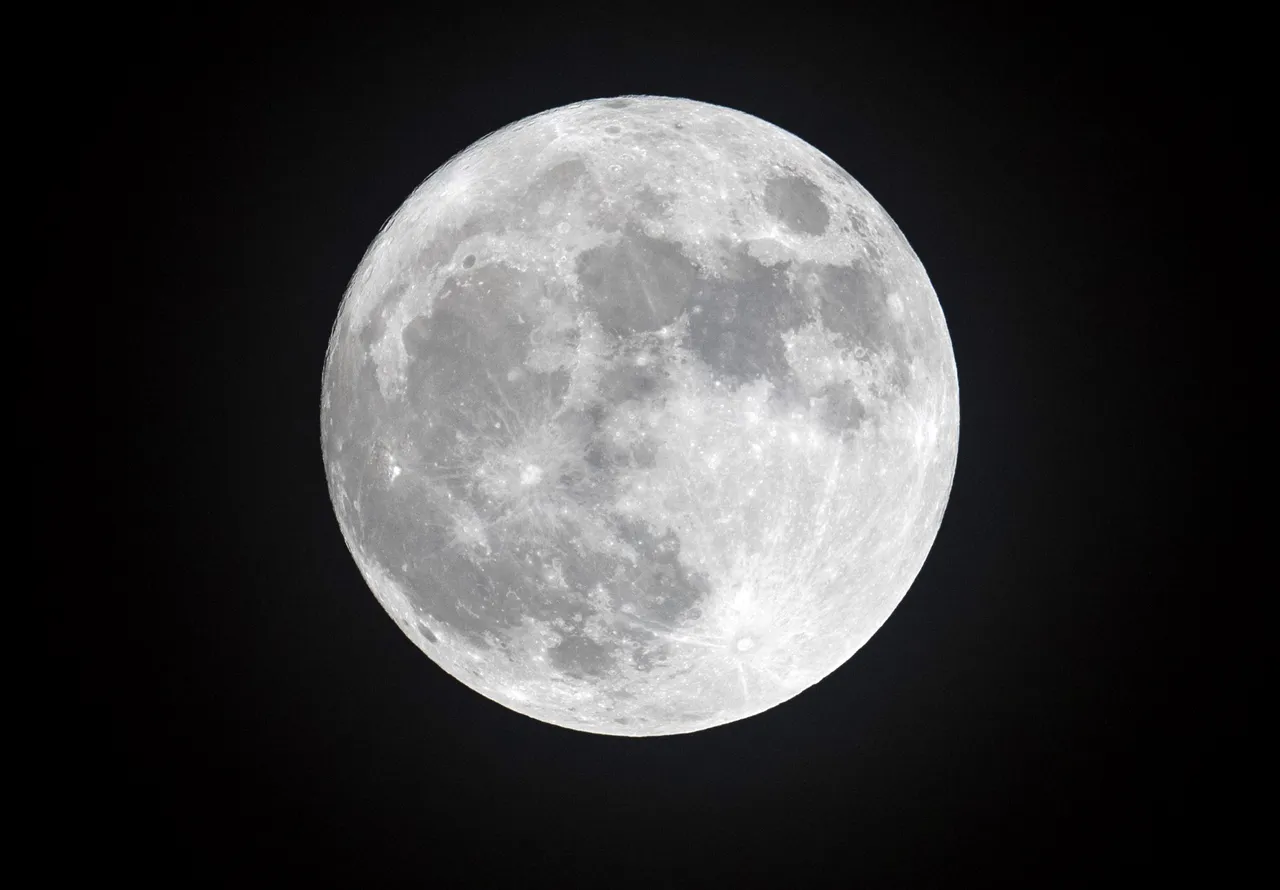The Moon is our companion in space. It’s an amazing world, a quarter the size of the Earth. It is also very close, just 384,400 kilometres away. Remember, we’re talking astronomy here! It only takes three days to get there by spaceprobe.
The Moon shines because it reflects light from our local star, the Sun. And because it circles the Earth once a month, we see different bits of it lit up as it follows its orbit. (The word ‘month’ actually comes from ‘moonth’.) At ‘New Moon’, you can’t see it, because it’s directly in line with the Sun, and sunlight bathes the far side of the Moon. But as the Moon moves on, the Sun starts to catch its edge, lighting it up as a crescent.
If you have binoculars or even a small telescope, this is the best time to look at the Moon. The shadows are long and dark: they really emphasise the Moon’s dramatic features. It is pockmarked with huge craters, caused by a massive bombardment by space rocks in the early days of the solar system. Because the Moon has hardly any atmosphere to wear its surface down, these scars are preserved in all their sharpness.

Full Moon is when the Moon shines brightest, opposite the Sun in the sky. Not the time to get out a telescope! But take a look at the ‘face’ of the ‘Man in the Moon’ without a telescope. You can see the Moon’s ‘eyes’, ‘nose’ and ‘mouth’. These are the dark, lava-filled scars that resulted from a hail of asteroids that hit the Moon 3.8 billion years ago.
Every year or so, something dramatic can happen. The Moon’s orbit is angled to the Earth, and sometimes – at Full Moon – it can pass into the Earth’s shadow. The brilliant Full Moon becomes ‘eclipsed’, or disappears. A truly spooky experience to see!
Amazingly, the Moon could shine a lot brighter in our skies if it was lighter in colour, and therefore more reflective. The Apollo astronauts who visited the Moon in the late 1960s and early 1970s were surprised at how dark the rocks were.
Neil Armstrong, the first man to set foot on the Moon, wrote that its colour was ‘flicts’. If you think that’s a made-up colour, you’d be right! An author that Neil Armstrong liked invented the word to describe a dark, sludgy brown that didn’t have a name. And Neil thought ‘flicts’ fitted the Moon perfectly.